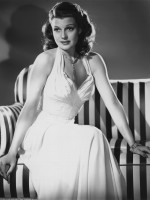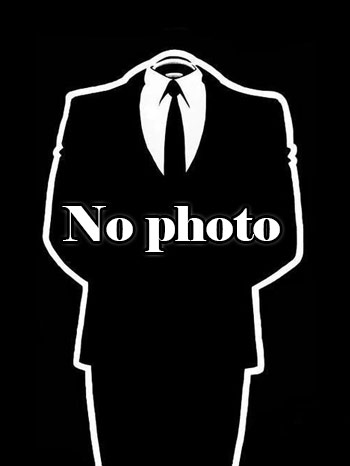Josef von Sternberg is a Actor, Director, Scriptwriter, Producer, Assistant Director, Director of Photography, Editor, Art Direction, Music and Cinematography Autriche-hongrie born on 29 may 1894 at Vienna (Austria)

Josef von Sternberg (29 May 1894 – 22 December 1969) was an Austrian-American film director.
After working with the award-winning German star Emil Jannings, he was invited to Berlin in 1930 to make one of Europe's first talkies, Der Blaue Engel (The Blue Angel) with Jannings and an unknown revue-artist Marlene Dietrich. His flattering soft-focus technique helped to create the Dietrich legend in the six films they made together in Hollywood.
Von Sternberg was born Jonas Sternberg to a Jewish family in Vienna. When he was two years old his father moved to the United States. He followed, with the remainder of his immediate family, at the age of seven. They returned to Vienna three years later, before finally returning to America after Sternberg had turned fourteen. His father, Moses (Morris) Sternberg, a former soldier in the army of Austria-Hungary, twice tried to make a home for the family in the US before finding employment as a lace worker. (The false aristocratic title 'von' was added in 1925 by actor/co-producer Elliott Dexter during the production of By Divine Right, supposedly to "even up" the credits as they appeared on screen. Sternberg did not protest, since it invited comparison with his hero, Erich von Stroheim.).
Early career
Von Sternberg dropped out of Jamaica High School and worked as an errand boy in a lace warehouse. He later obtained a job cleaning and repairing movie prints, and by about 1915 found himself working for William A. Brady at the World Film Company at Fort Lee, New Jersey, mentored by Emile Chautard and other French-speaking directors and cinematographers at World. Chautard hired him as assistant director in 1919 for a version of The Mystery of the Yellow Room, and Sternberg made his directorial debut in 1925 with The Salvation Hunters, called by some the first American independent film.
Charlie Chaplin was impressed by The Salvation Hunters, and encouraged Douglas Fairbanks and Mary Pickford to acquire the rights to it. Pickford also asked Sternberg to direct a film with her as star, but rejected his first scenario. Chaplin also commissioned him to write and direct A Woman of the Sea (also known as The Sea Gull), starring his former star and lover Edna Purviance, but this film was later destroyed by Chaplin. Still photographs from A Woman of the Sea were published by Purviance's family in 2008.
Von Sternberg had commercial success later in the decade at Paramount Pictures with the late-period silent films The Last Command and The Docks of New York (1928), both noted for their influential cinematography. His reputation was also advanced by a series of early gangster films including Underworld and Thunderbolt.
Dietrich
Von Sternberg's career suffered a decline after Thunderbolt and he accepted an invitation to make a film in Germany. In 1929, Sternberg worked in Berlin and directed the widely acclaimed film Der blaue Engel (The Blue Angel; 1930) in both German and English versions simultaneously, one of the first German-language talkies (Melodie des Herzens was released in 1929). It was Sternberg's second film with the German actor Emil Jannings as the doomed Professor Rath. (The first was The Last Command.)
Von Sternberg also cast the then little known Marlene Dietrich as Lola Lola, the female lead, and made her an international star overnight. Sternberg and Dietrich continued to collaborate in the United States on Morocco (1930), Dishonored (1931), Shanghai Express (1932), Blonde Venus (1932), The Scarlet Empress (1934), and The Devil is a Woman (1935). The Scarlet Empress is particularly celebrated for its atmospheric and suggestively demonic production design.
In 1932, von Sternberg commissioned architect Richard Neutra to design the 'Von Sternberg House', an avant-garde American modernist residence. It was later occupied by Ayn Rand and eventually demolished in 1972.
Von Sternberg is one of the directors to whom has been attributed the origin of the expression "MOS", a phrase used when a scene is to be filmed without sound.
Later career
Macao (1952) was von Sternberg's last Hollywood film. Anatahan (1953), made in Japan, is the story of a group of Japanese soldiers who refused to believe that the Second World War had ended. The film, which was directed, photographed, narrated, and written by von Sternberg, saw limited release and was a financial failure. It was also Sternberg's final film; although another Hollywood picture he co-directed (Jet Pilot) was released in 1957, it had actually been shot seven years earlier, when he was still under contract to producer Howard Hughes.
Between 1959 and 1963 von Sternberg taught a course on film aesthetics at the University of California at Los Angeles, based on his own films. His students included Jim Morrison and Ray Manzarek, who went on to form the rock group The Doors. References to Sternberg films appear in some songs by the group, and Manzarek describes Sternberg as "perhaps the greatest single influence on The Doors."
Von Sternberg died from a heart attack in 1969 at age 75. He was interred in the Westwood Village Memorial Park Cemetery in Westwood, California near several film studios. Fun in a Chinese Laundry, von Sternberg's autobiography, which took its title from an early film comedy, was published in 1965.
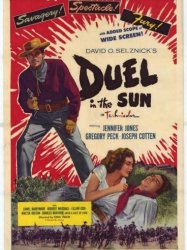 (1946)
(1946)
(Director) (1932)
(1932)
(Director)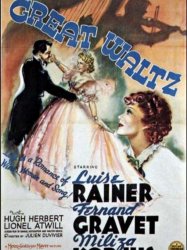 (1938)
(1938)
(Director) (1927)
(1927)
(Director)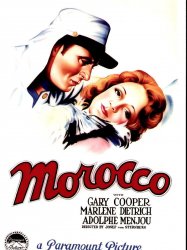 (1930)
(1930)
(Director) (1928)
(1928)
(Director)
Source : Wikidata
Josef von Sternberg

- Infos
- Photos
- Best films
- Family
- Characters
- Awards
Birth name Jonas Sternberg
Nationality Autriche-hongrie
Birth 29 may 1894 at Vienna (Austria)
Death 22 november 1969 (at 75 years) at Beverly Hills (USA)
Nationality Autriche-hongrie
Birth 29 may 1894 at Vienna (Austria)
Death 22 november 1969 (at 75 years) at Beverly Hills (USA)
Josef von Sternberg (29 May 1894 – 22 December 1969) was an Austrian-American film director.
After working with the award-winning German star Emil Jannings, he was invited to Berlin in 1930 to make one of Europe's first talkies, Der Blaue Engel (The Blue Angel) with Jannings and an unknown revue-artist Marlene Dietrich. His flattering soft-focus technique helped to create the Dietrich legend in the six films they made together in Hollywood.
Biography
YouthVon Sternberg was born Jonas Sternberg to a Jewish family in Vienna. When he was two years old his father moved to the United States. He followed, with the remainder of his immediate family, at the age of seven. They returned to Vienna three years later, before finally returning to America after Sternberg had turned fourteen. His father, Moses (Morris) Sternberg, a former soldier in the army of Austria-Hungary, twice tried to make a home for the family in the US before finding employment as a lace worker. (The false aristocratic title 'von' was added in 1925 by actor/co-producer Elliott Dexter during the production of By Divine Right, supposedly to "even up" the credits as they appeared on screen. Sternberg did not protest, since it invited comparison with his hero, Erich von Stroheim.).
Early career
Von Sternberg dropped out of Jamaica High School and worked as an errand boy in a lace warehouse. He later obtained a job cleaning and repairing movie prints, and by about 1915 found himself working for William A. Brady at the World Film Company at Fort Lee, New Jersey, mentored by Emile Chautard and other French-speaking directors and cinematographers at World. Chautard hired him as assistant director in 1919 for a version of The Mystery of the Yellow Room, and Sternberg made his directorial debut in 1925 with The Salvation Hunters, called by some the first American independent film.
Charlie Chaplin was impressed by The Salvation Hunters, and encouraged Douglas Fairbanks and Mary Pickford to acquire the rights to it. Pickford also asked Sternberg to direct a film with her as star, but rejected his first scenario. Chaplin also commissioned him to write and direct A Woman of the Sea (also known as The Sea Gull), starring his former star and lover Edna Purviance, but this film was later destroyed by Chaplin. Still photographs from A Woman of the Sea were published by Purviance's family in 2008.
Von Sternberg had commercial success later in the decade at Paramount Pictures with the late-period silent films The Last Command and The Docks of New York (1928), both noted for their influential cinematography. His reputation was also advanced by a series of early gangster films including Underworld and Thunderbolt.
Dietrich
Von Sternberg's career suffered a decline after Thunderbolt and he accepted an invitation to make a film in Germany. In 1929, Sternberg worked in Berlin and directed the widely acclaimed film Der blaue Engel (The Blue Angel; 1930) in both German and English versions simultaneously, one of the first German-language talkies (Melodie des Herzens was released in 1929). It was Sternberg's second film with the German actor Emil Jannings as the doomed Professor Rath. (The first was The Last Command.)
Von Sternberg also cast the then little known Marlene Dietrich as Lola Lola, the female lead, and made her an international star overnight. Sternberg and Dietrich continued to collaborate in the United States on Morocco (1930), Dishonored (1931), Shanghai Express (1932), Blonde Venus (1932), The Scarlet Empress (1934), and The Devil is a Woman (1935). The Scarlet Empress is particularly celebrated for its atmospheric and suggestively demonic production design.
In 1932, von Sternberg commissioned architect Richard Neutra to design the 'Von Sternberg House', an avant-garde American modernist residence. It was later occupied by Ayn Rand and eventually demolished in 1972.
Von Sternberg is one of the directors to whom has been attributed the origin of the expression "MOS", a phrase used when a scene is to be filmed without sound.
Later career
Macao (1952) was von Sternberg's last Hollywood film. Anatahan (1953), made in Japan, is the story of a group of Japanese soldiers who refused to believe that the Second World War had ended. The film, which was directed, photographed, narrated, and written by von Sternberg, saw limited release and was a financial failure. It was also Sternberg's final film; although another Hollywood picture he co-directed (Jet Pilot) was released in 1957, it had actually been shot seven years earlier, when he was still under contract to producer Howard Hughes.
Between 1959 and 1963 von Sternberg taught a course on film aesthetics at the University of California at Los Angeles, based on his own films. His students included Jim Morrison and Ray Manzarek, who went on to form the rock group The Doors. References to Sternberg films appear in some songs by the group, and Manzarek describes Sternberg as "perhaps the greatest single influence on The Doors."
Von Sternberg died from a heart attack in 1969 at age 75. He was interred in the Westwood Village Memorial Park Cemetery in Westwood, California near several film studios. Fun in a Chinese Laundry, von Sternberg's autobiography, which took its title from an early film comedy, was published in 1965.
Best films
 (1946)
(1946)(Director)
 (1932)
(1932)(Director)
 (1938)
(1938)(Director)
 (1927)
(1927)(Director)
 (1930)
(1930)(Director)
 (1928)
(1928)(Director)
Usually with
Filmography of Josef von Sternberg (41 films)
Actor
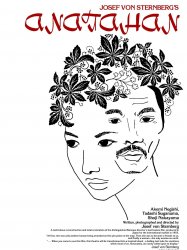
Anatahan (1953)
, 1h32Directed by Josef von Sternberg
Genres Drama, War
Actors Akemi Negishi, Josef von Sternberg
Roles Narrator (voice)
Rating69%





Twelve men of a shipwreck find themselves on a desert island, which is only inhabited by a farmer and a beautiful woman. A bloody struggle of power ensues, as also they find hand weapons from the crash of an American fighter. Josef von Sternberg directed, photographed, provides the voice-over narration and wrote the screenplay (from a based-on-actual event novel by Michiro Maruyana translated by Younghill Kang) about twelve Japanese seamen who, in June 1944, are stranded on an abandoned-and-forgotten island called An-ta-han for seven years. The island's only inhabitants are the overseer of the abandoned plantation and an attractive young Japanese woman. Discipline is represented by a former warrant officer but ends when he suffers a loss-of-face catastrophe. Soon, discipline and rationality are replaced by a struggle for power and the woman. Power is represented by a pair of pistols found in the wreckage of an American airplane, so important that five men pay for their lives in a bid for supremacy.
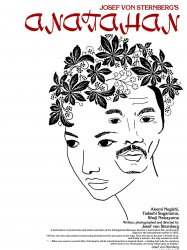
Anatahan (1953)
, 1h32Directed by Josef von Sternberg
Origin Japon
Genres Drama, War
Actors Akemi Negishi, Josef von Sternberg
Roles Narrator (voice)
Rating69%





En juin 1944, un groupe de soldats japonais naufragés se retrouve sur une île presque déserte du Pacifique, Anatahan, habitée uniquement par un Japonais, Kusakabe, gardien d'une plantation abandonnée, et une jeune femme japonaise, Keiko, sa compagne. Très vite, les hommes s'affrontent avec violence pour posséder la femme, la « reine des abeilles », qui passe désormais d'un homme à un autre. Lorsque leur parvient la nouvelle de la défaite japonaise, ils refusent de l'admettre, croyant à une ruse ennemie, et les années passent. La femme finit par s'enfuir, et fait parvenir aux rescapés des lettres de leurs familles. Convaincus, ils acceptent enfin la défaite, et en 1951, les survivants rentrent au Japon.

A Girl's Folly (1917)
, 1h5Directed by Maurice Tourneur, Clarence Brown
Origin USA
Genres Comedy, Comedy-drama
Actors Robert Warwick, Doris Kenyon, Émile Chautard, Leatrice Joy, Maurice Tourneur, June Elvidge
Roles Cameraman (uncredited)
Rating60%





A young girl, who wants more from the environment of her small town, comes across a film crew shooting a western. When the leading man she befriends with encourages to become an actress, she moves to the big city. However, things don't turn out quite the way she planned.
Director

Jet Pilot (1957)
, 1h52Directed by Josef von Sternberg, Jules Furthman, Fred Fleck
Origin USA
Genres Drama, Action, Adventure, Romance
Themes Transport films, Aviation films, Political films, United States Armed Forces in films
Actors John Wayne, Janet Leigh, Jay C. Flippen, Paul Fix, Hans Conried, Denver Pyle
Rating56%





A Russian defector lands a jet fighter aircraft on an American airstrip. The base commander, Air Force Colonel Jim Shannon (John Wayne) is surprised to find that the pilot is an attractive woman, Lieutenant Anna Marladovna (Janet Leigh). When she asks for asylum, but refuses to disclose any military information, Shannon is assigned to seduce her. They fall in love. Worried about the possibility of deportation, Jim marries her without permission.

Anatahan (1953)
, 1h32Directed by Josef von Sternberg
Origin Japon
Genres Drama, War
Actors Akemi Negishi, Josef von Sternberg
Rating69%





En juin 1944, un groupe de soldats japonais naufragés se retrouve sur une île presque déserte du Pacifique, Anatahan, habitée uniquement par un Japonais, Kusakabe, gardien d'une plantation abandonnée, et une jeune femme japonaise, Keiko, sa compagne. Très vite, les hommes s'affrontent avec violence pour posséder la femme, la « reine des abeilles », qui passe désormais d'un homme à un autre. Lorsque leur parvient la nouvelle de la défaite japonaise, ils refusent de l'admettre, croyant à une ruse ennemie, et les années passent. La femme finit par s'enfuir, et fait parvenir aux rescapés des lettres de leurs familles. Convaincus, ils acceptent enfin la défaite, et en 1951, les survivants rentrent au Japon.

Anatahan (1953)
, 1h32Directed by Josef von Sternberg
Genres Drama, War
Actors Akemi Negishi, Josef von Sternberg
Rating69%





Twelve men of a shipwreck find themselves on a desert island, which is only inhabited by a farmer and a beautiful woman. A bloody struggle of power ensues, as also they find hand weapons from the crash of an American fighter. Josef von Sternberg directed, photographed, provides the voice-over narration and wrote the screenplay (from a based-on-actual event novel by Michiro Maruyana translated by Younghill Kang) about twelve Japanese seamen who, in June 1944, are stranded on an abandoned-and-forgotten island called An-ta-han for seven years. The island's only inhabitants are the overseer of the abandoned plantation and an attractive young Japanese woman. Discipline is represented by a former warrant officer but ends when he suffers a loss-of-face catastrophe. Soon, discipline and rationality are replaced by a struggle for power and the woman. Power is represented by a pair of pistols found in the wreckage of an American airplane, so important that five men pay for their lives in a bid for supremacy.

Macao (1952)
, 1h21Directed by Robert Stevenson, Nicholas Ray, Josef von Sternberg, Mel Ferrer
Origin USA
Genres Drama, Adventure, Noir, Crime, Romance
Actors Robert Mitchum, Jane Russell, William Bendix, Gloria Grahame, Thomas Gomez, Brad Dexter
Rating65%





Three strangers arrive at the port of Macao on the same ship: Nick Cochran (Robert Mitchum), a cynical-but-honest ex-serviceman, Julie Benson (Jane Russell), an equally cynical, sultry night club singer, and Lawrence Trumble (William Bendix), a traveling salesman who deals in both silk stockings and contraband.

Duel in the Sun (1946)
, 2h9Directed by William Dieterle, Otto Brower, David Selznick, Josef von Sternberg, King Vidor, William Cameron Menzies, Sidney Franklin
Origin USA
Genres Drama, Action, Romance, Western
Themes Films about capital punishment
Actors Jennifer Jones, Joseph Cotten, Gregory Peck, Lionel Barrymore, Herbert Marshall, Lillian Gish
Rating66%





Pearl Chavez (Jennifer Jones) is orphaned after her father Scott Chavez (Herbert Marshall) kills her mother (Tilly Losch), having caught his wife with a lover (Sidney Blackmer). Before Scott Chavez is executed as a punishment for killing his wife, he arranges for his daughter Pearl to live with his second cousin and old sweetheart, Laura Belle (Lillian Gish).

The Town (1944)
, 12minutesDirected by Josef von Sternberg
Origin USA
Genres Documentary
Themes Documentary films about war, Documentary films about historical events, Political films, Documentary films about World War II
Actors Myron McCormick
Rating58%





The Town presents an idealized vision of American life, shown in microcosm by Madison, Indiana. The diversity of the town's ethnic origins is highlighted, noting the Czech, Dutch, German, and Italian communities, some of whom were immigrants or children of immigrants. Schools are shown to be free and open to all, as are libraries and swimming pools. The press is depicted as free. Some people are shown who don't like the current administration in Washington, and don't like the newspaper's policy, but the newspaper prints their complaint. Trials are conducted in front of a jury, for all the world to see. The prosecutor serves as the judge's opponent in the last election, and even said he was unfit for office, but they work together anyway. Everyone had the right to vote, from the store keeper, to the attorney himself. In a democracy, the only thing that is secret is the ballot.

The Shanghai Gesture (1942)
, 1h39Directed by Josef von Sternberg
Origin USA
Genres Drama, Thriller
Themes Théâtre, Films based on plays
Actors Gene Tierney, Walter Huston, Victor Mature, Ona Munson, Albert Bassermann, Phyllis Brooks
Rating65%





Gigolo "Doctor" Omar (Victor Mature) bribes the Shanghai police not to jail the broke American showgirl Dixie Pomeroy (Phyllis Brooks); he invites her to seek a job at the casino owned by Dragon-lady "Mother" Gin Sling (Ona Munson), his boss.

I Take This Woman (1940)
, 1h38Directed by Frank Borzage, Josef von Sternberg, W. S. Van Dyke
Origin USA
Genres Drama, Romance
Actors Spencer Tracy, Hedy Lamarr, Jack Carson, Verree Teasdale, Kent Taylor, Louis Calhern
Rating62%





On the way to New York in a ship, a famous psychiatrist, Dr. Karl Decker (Spencer Tracy), sees a young girl, Georgi (Hedy Lamarr) attempting suicide by jumping from the top because of a failed romance with Phil Mayberry (Kent Taylor). The doctor rescues her and makes her understand how to live by doing real work.
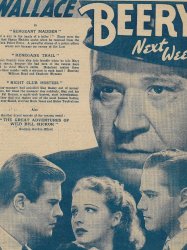
Sergeant Madden (1939)
, 1h20Directed by Josef von Sternberg
Origin USA
Genres Drama, Crime
Actors Wallace Beery, Alan Curtis, Tom Brown, Laraine Day, Fay Holden, Marc Lawrence
Rating60%





Le fils d'un shérif essaye de suivre les traces de son père, mais est tellement violent qu'il se retrouve hors-la-loi.

The Great Waltz (1938)
, 1h44Directed by Victor Fleming, Josef von Sternberg, Julien Duvivier
Origin USA
Genres Drama, Biography, Musical, Romance
Themes Dance films, Films about music and musicians, Films about classical music and musicians, Musical films
Actors Luise Rainer, Miliza Korjus, Lionel Atwill, Henry Hull, Hugh Herbert, Curt Bois
Rating64%





The highly fictionalised story sees 'Schani' dismissed from his job in a bank. He puts together a group of unemployed musicians who wangle a performance at Dommayer's cafe. The audience is minimal, but when two opera singers, Carla Donner and Fritz Schiller, visit whilst their carriage is being repaired, the music attracts a wider audience.

I, Claudius (1937)
Directed by Josef von Sternberg
Origin United-kingdom
Genres Drama, Historical, Peplum
Themes Films set in Africa, Political films
Actors Charles Laughton, Flora Robson, Emlyn Williams, Merle Oberon, Robert Newton, Leonora Corbett
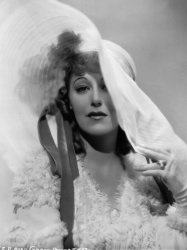
The King Steps Out (1936)
, 1h25Directed by Josef von Sternberg
Origin USA
Genres Musical, Romance
Themes Musical films, Films based on plays
Actors Grace Moore, Gwen Verdon, Franchot Tone, Walter Connolly, Raymond Walburn, Elisabeth Risdon
Rating61%





Une jeune femme sauve sa sœur d'un mariage avec un empereur pour lequel elle n'éprouve aucun sentiment.
 Connection
Connection
